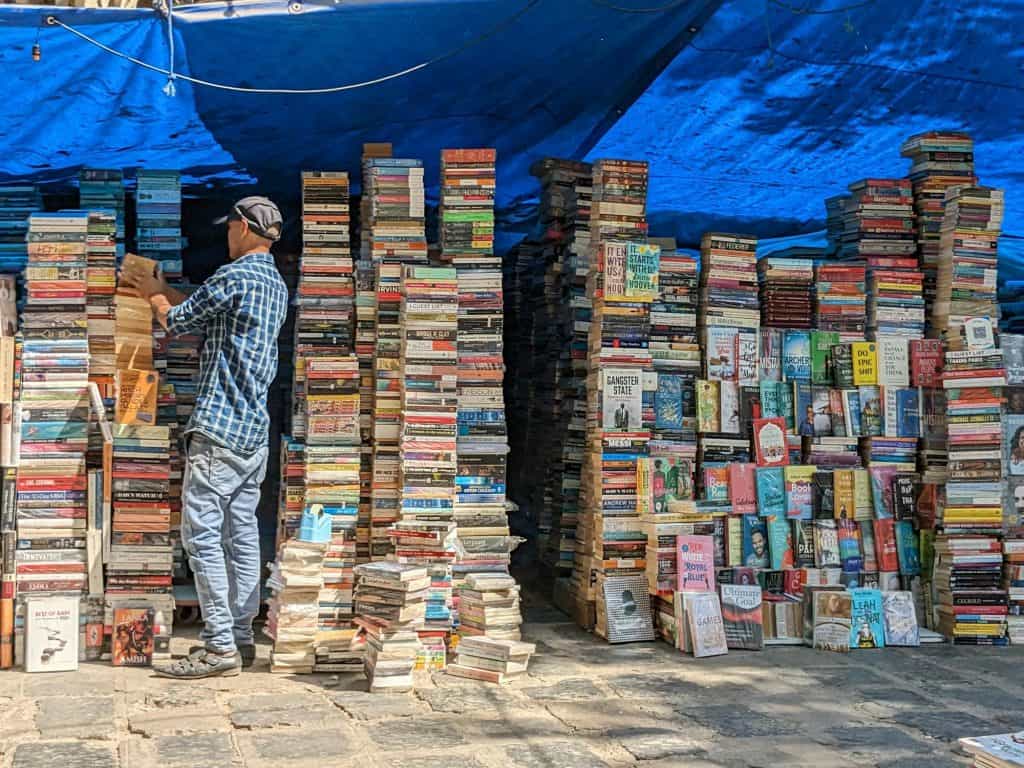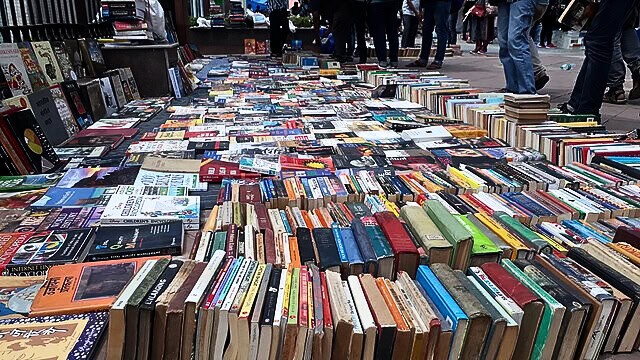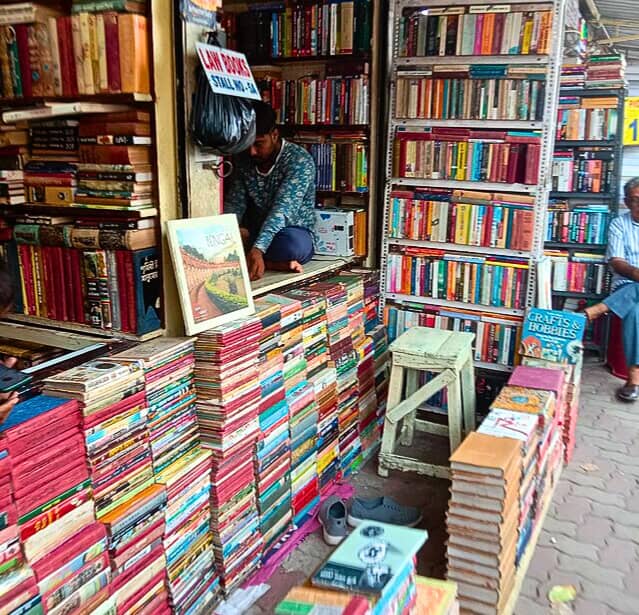Historic Indian book markets offer rare finds, academic texts, and cultural treasures across vibrant city streets steeped in history and community spirit.

Indian book markets are historical and cultural landmarks that embody the literary pulse of their cities. Here’s an expanded look at the leading book markets, the kinds of books they offer, their histories, and practical tips on how to reach them.
Daryaganj Book Market & Nai Sarak, Delhi
In the heart of Old Delhi, where the air hums with the scent of spice shops and the clang of cycle rickshaws, lies one of the capital’s greatest weekend rituals: the Daryaganj Sunday Book Market. Stretching for nearly a kilometre, it transforms a slice of the city into a literary carnival each week, a tradition that has endured since the 1960s. Here, pavements and makeshift stalls groan under the weight of printed words; everything from fresh paperbacks to hardbound relics with histories of their own.

The selection is dizzying. Academic essentials line the path, catering to every stream from engineering and medicine to arts and law. For students, it is a goldmine of competitive exam guides sold at a fraction of their original cost. Side by side, there are stacks of Hindi and English classics, dusty, rare editions long out of print, and children’s comics and magazines that spark nostalgia. Amid the piles, you might even spot international bestsellers or unexpected gems; half the joy here lies in the serendipity of discovery.
A short stroll away is Nai Sarak, another historic book hub famous for its endless rows of affordable textbooks and stationery supplies. For decades, it has served as Delhi’s academic artery, supplying generations of students with everything they need to keep pace with their studies.
The market’s history has not been without drama. In recent years, Daryaganj faced closure due to civic regulations, sending ripples of dismay through the city’s reading community. But public outcry prevailed, and the market found a new home nearby, keeping its old-world charm intact. Bargaining remains a time-honoured skill here, part sport, part social ritual, and seasoned buyers know that the best deals often go to the most patient negotiators.
Reaching the market
The nearest metro stations, Delhi Gate and Chawri Bazar, drop you within walking distance of the action. While you can browse Nai Sarak any day, Sundays are when Daryaganj comes alive, offering the kind of vibrant street-book experience that turns casual visitors into devoted regulars.
Avenue Road, Bengaluru
Avenue Road in central Bengaluru is an academic lifeline, where bookshops have been nurturing students, job seekers, and passionate readers for over a century. The scent of ink and the warm glow of shopfronts spill onto the busy pavement, drawing in everyone from hurried undergraduates to leisurely browsers in search of their next read.
The range of books here reflects Bengaluru’s role as one of India’s great educational hubs. Engineering and science textbooks sit alongside school and college guides, offering affordable lifelines to those preparing for exams. Tucked into shelves are well-worn volumes of literary fiction and timeless Kannada literature, celebrating the state’s rich linguistic heritage. At street-side stalls, thin exam pamphlets promise quick preparation for competitive tests, while newer shops are carving a space for poetry collections and self-help titles that speak to the city’s young, ambitious crowd.
Avenue Road’s book culture took shape in the early 20th century, growing in tandem with Bengaluru’s own transformation into a centre of education and technology. Generations of students have traced their academic journeys through these lanes, and many return years later for nostalgia.
Reaching The Market
The Majestic and Chickpet Metro stations place you within easy walking distance, and auto-rickshaws and buses weave through the surrounding commercial districts. The market rewards those who wander without haste, ducking into cramped interiors where owners often know their regulars by name and can recall exactly where a requested title rests among the teetering stacks.
Moore Market, Chennai
Tucked beside the grand façade of Chennai Central Railway Station, Moore Market is a place where time seems to slow down. For generations, it has been a sanctuary for those who find joy in the scent of yellowing pages and the thrill of unearthing rare treasures. Whether you are a lifelong bibliophile or a casual wanderer, stepping into its narrow lanes feels like entering a living archive of Chennai’s literary and cultural past.
The selection here is deliciously eclectic. You’ll find stacks of second-hand English and Tamil books, ranging from contemporary fiction to beloved classics. Comics and vintage magazines spill out of wooden racks, their faded covers holding decades-old stories. Students trawl through piles of academic texts and imported technical manuals, while collectors hunt for old detective novels that might be long forgotten elsewhere. Some stalls even have books stamped with the marks of libraries halfway across the world, lending them a history as intriguing as their contents.
Moore Market’s story began in 1900, when it was founded as a bustling bazaar selling everything from pets to antiques. Over the years, the bookshops became its most enduring legacy. In 1985, a devastating fire destroyed much of the original market, but the booksellers refused to let its spirit die. They relocated nearby, and today, the market continues to embody that same mix of resilience and romance, its shelves still laden with collectables that defy the rush of the digital age.
Reaching The Market
The market sits right next to Chennai Central Station, making it accessible by train, metro, and a constant flow of local transport. Many visitors plan their trip to coincide with a train journey, slipping into the market before departure or lingering here upon arrival.
College Street, Kolkata
If there is a beating heart to India’s literary culture, it pulses along the bustling stretch of College Street in Kolkata, fondly known as Boi Para, or “Book Town.” Here, the air is thick with the scent of old paper, the murmur of bargaining voices, and the occasional rustle of pages as hands search for a long-sought title. It is the largest book market in India and proudly claims the title of Asia’s biggest second-hand book hub.

The sheer variety here is staggering. You might find academic lifelines, engineering manuals, medical textbooks, tomes on political science or Sanskrit stacked in neat towers by vendors who know the syllabi of the city’s universities almost by heart. On the other hand, you’ll encounter Bengali literary treasures: works of Rabindranath Tagore, Sarat Chandra Chattopadhyay, and contemporary voices, often printed in vibrant paperbacks. Between them lie rare first editions, foreign language imports, avant-garde magazines, collectable coffee-table books, and rows of illustrated children’s stories. Prices are often negotiable, making it a sanctuary for both penniless students and passionate collectors.
The origins of College Street are deeply entwined with Kolkata’s academic heritage. In the 19th century, the area blossomed around a cluster of prestigious educational institutions Presidency College, the University of Calcutta, and the Hindu School, among others. As scholars, professors, and students mingled in this intellectual hotbed, bookshops naturally sprouted to meet their needs, eventually transforming the street into an enduring cultural landmark.
Adding to its lore is the Indian Coffee House, a cavernous and high-ceilinged, where political debates, literary discussions, and artistic visions have brewed alongside countless cups of coffee. Over the decades, it has hosted legends such as Satyajit Ray, Amartya Sen, and Mrinal Sen, becoming a meeting ground for generations of thinkers.
Reaching The Market
Located in central Kolkata, it’s accessible via several bus routes, yellow Ambassador taxis, or even a leisurely ride in a cycle rickshaw, Kolkata Metro (College Street station). The market lies within walking distance of the city’s major educational institutions, making it a daily haunt for students and scholars alike.
Abids & Koti, Hyderabad
When the weekend sun rises over Hyderabad, the neighbourhoods of Abids and Koti awaken into open-air libraries. By mid-morning, pavements are transformed into winding aisles lined with books, and the hum of bargaining mixes with the clinking of chai glasses at roadside stalls. Together, these parallel markets offer a distinctly Hyderabadi experience, part hunt, part heritage, and entirely devoted to the written word.
The offerings are as varied as the city’s own cultural tapestry. Students come searching for competitive exam guides, while others browse stacks of fiction that range from popular thrillers to hardbound classics. Poetry in Telugu, Urdu, and English sits beside stacks of yellowed encyclopedias, their pages crinkled with age.
Both markets are rooted in the old city’s traditions, where the influences of Deccani culture blend seamlessly with the remnants of British-era scholasticism. Abids, in particular, is known for its Sunday spectacle, when streets fill with vendors setting up impromptu stalls in the shade of old buildings, while Koti’s bookshops, many tucked into historic arcades, cater year-round to the city’s academic and literary crowd.
Reaching The Market
The markets lie in the central city and can be reached by MMTS local trains, an extensive network of buses, or the Hyderabad Metro. Many visitors choose to pair their browsing with a leisurely lunch at one of the old Irani cafés nearby, making it as much a cultural outing as a shopping trip.
Flora Fountain, Mumbai
In the heart of Mumbai’s historic Fort district, the elegant Flora Fountain stands as a Victorian sentinel, surrounded by the daily hum of office-goers, tourists, and, most delightfully, booksellers. Here, the city’s colonial architecture frames a street-side market where literature flows as freely as the lunchtime crowd. Footpath stalls sprawl along the pavements, their canvas awnings sheltering towers of books that seem to grow taller with each passing hour.
The variety is as cosmopolitan as Mumbai itself. Rare classics sit side-by-side with imported bestsellers, tempting both casual readers and collectors. Parents guide children toward colourful shelves of children’s literature, while young professionals hunt for law textbooks or business guides in the midst of their workday errands.
Flora Fountain’s book market emerged in the post-independence years, when street vendors began catering to the city’s growing class of office workers, lawyers, and students. Over the decades, it has weathered shifting literary tastes and Mumbai’s ever-changing skyline, adapting to new reading trends while retaining its old-school street-market charm. The sight of a vendor deftly recommending a book based on a two-minute conversation is as much a part of the experience as the books themselves.
Reaching The Market
Churchgate and Chhatrapati Shivaji Terminus (CST) stations are both within walking distance, and the market is well-connected by bus and taxi. A stroll through these lanes pairs perfectly with a visit to the nearby cafés, art galleries, and heritage landmarks that make the Fort area one of the city’s most atmospheric quarters.
Appa Balwant Chowk (ABC), Pune
In Pune, a city often called the Oxford of the East, Appa Balwant Chowk, or simply ABC, has long been the place where academic ambition meets the easy camaraderie of a chai break. This bustling book hub forms an unbroken link between the city’s numerous colleges and the eager minds they nurture. Here, the hum of traffic is matched by the murmur of customers flipping through books, negotiating prices, or simply lingering over a conversation about their favourite authors.
ABC’s bookstalls and shops cater to an impressively wide audience. Textbooks for every discipline, from engineering to literature, share shelf space with competitive exam guides for UPSC, banking, and state-level tests. Readers can browse current fiction fresh from the presses, religious scriptures in Sanskrit, Hindi, and Marathi, and children’s comics that evoke the nostalgia of summer holidays. Indian language titles thrive here, reflecting Pune’s literary traditions and the city’s deep appreciation for Marathi literature in particular.
The story of ABC is entwined with Pune’s transformation into a student capital in the decades after independence. Since the 1950s, its pavements have been stacked with books, sometimes in neat rows, sometimes in haphazard piles that invite curious rummaging. Generations of students have bought their first-year syllabi here, returned for reference books, and eventually come back for novels to read in the quieter moments of campus life.
Reaching The Market
It’s a short ride from Pune Junction railway station by local bus or auto-rickshaw, and those staying in the city centre can easily walk there. For many, the trip is incomplete without a stop at one of the nearby chai stalls, where steaming cups fuel long discussions about exams, ideas, and the stories waiting between the covers of a newly purchased book.
Aminabad, Lucknow
In Aminabad, the literary and culinary worlds live side by side. This old quarter of Lucknow hums with an unmistakable blend of the spice-laden air of kebab stalls, the earthy scent of old paper, and the faint perfume of attar drifting from nearby shops. Between textile merchants and food vendors, bookstalls stand like quiet pockets of reflection amid the market’s bustle, offering a slower rhythm in a city famous for its leisurely grace.
The selection is a tribute to Lucknow’s cultural depth, with volumes by Mirza Ghalib, Faiz Ahmed Faiz, and contemporary poets displayed alongside Hindi literature and rare biographies. Shelves also hold local history books that capture the spirit of the Nawabi era and the city’s enduring syncretic heritage. The occasional illustrated children’s book or slim novel in English adds to the variety, but the soul of Aminabad’s book trade is firmly rooted in its regional and historical identity.
Aminabad’s creative pulse stretches back to the Nawabi era, when it was a gathering place for poets, writers, and thinkers. In the evenings, mushairas (poetry recitals) would echo through its courtyards, and the area’s refined conversational culture shaped the literary tastes of generations. Today, the book vendors keep that legacy alive, even as the market embraces the energy of modern commerce.
Getting There: The Aminabad Metro station drops visitors right into the heart of the market, and buses and cabs ply the area throughout the day. Many choose to combine a book hunt with a food trail, starting with a search for a rare poetry collection and ending with a plate of Galouti kebabs or Lucknawi biryani.
Read More: Latest



